The Coleraine

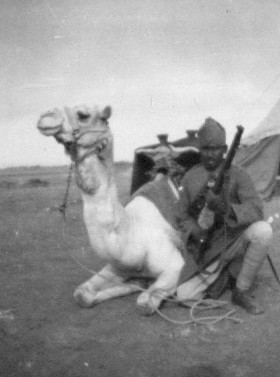
1939 - 1945
| Battery Roll Call |
The
But on February 12th 1941, the German Africa Corps had
disembarked in
The next
illustration shows the time scale for the series of eight attacks and counter
attacks that led to the defeat of the Axis powers on the
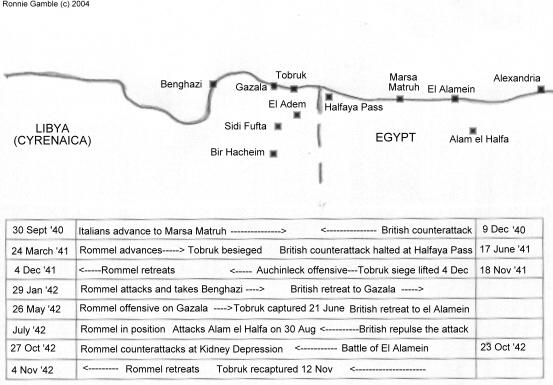
Final Training After leaving Port Tewfiq, the
Battery moved to Beni Suef,
near
AA Defence of
the Suez Canal
On completion of their training in
Beni Suef, the Battery was
operationally deployed from November 7th 1940 until July '41 on Static AA
Defence of the

|
Christmas Day 1940 |
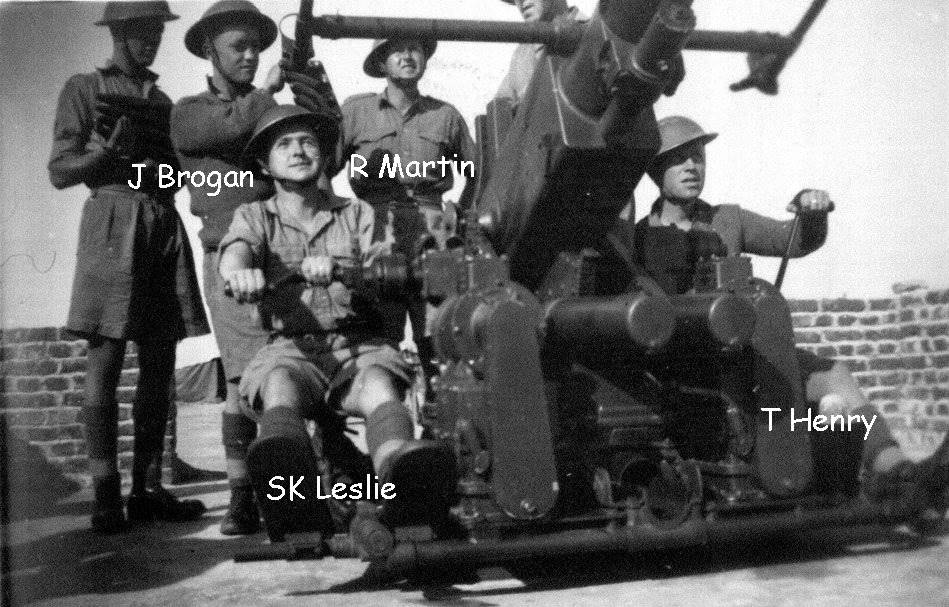
|
|
||||
|
W Patterson |
T Brogan |
S Leslie |
R Martin |
T Henry |
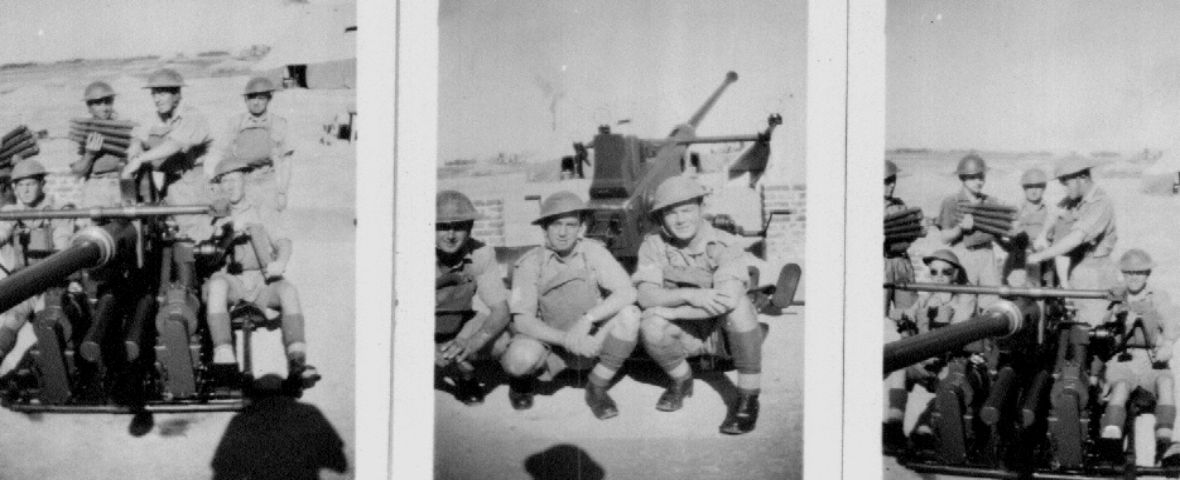
|
|

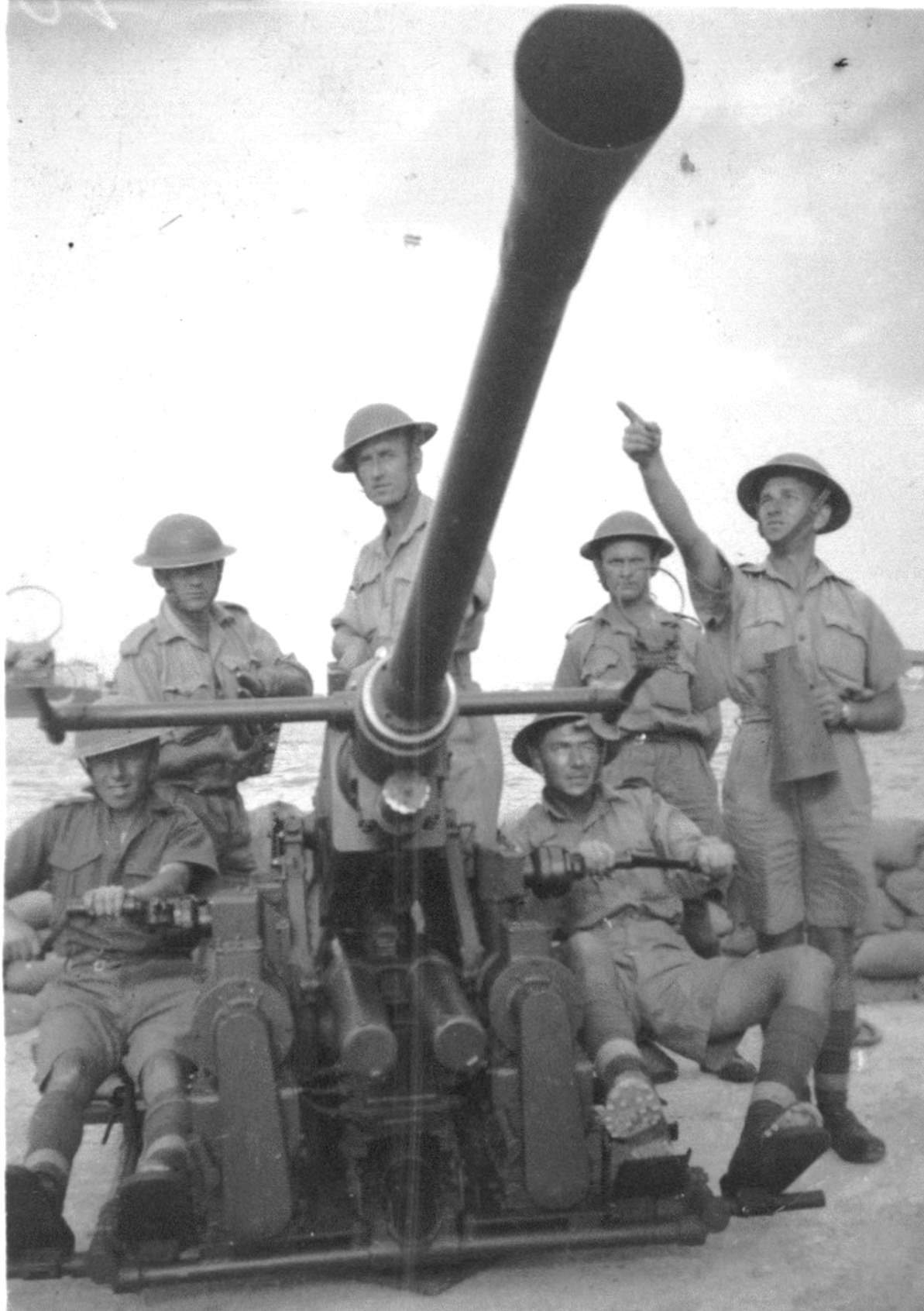
| C Walsh R McDonald S Leslie R McClelland W Patterson C Connell T Gamble Diamond R McCook R Hutchinson S Archibald S Nevin |
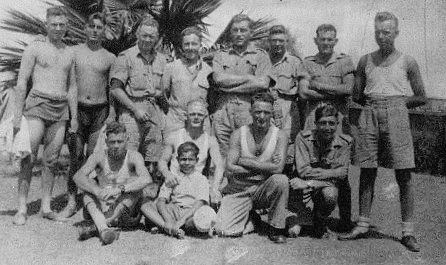
Port Siad 1940

Port Siad 1940

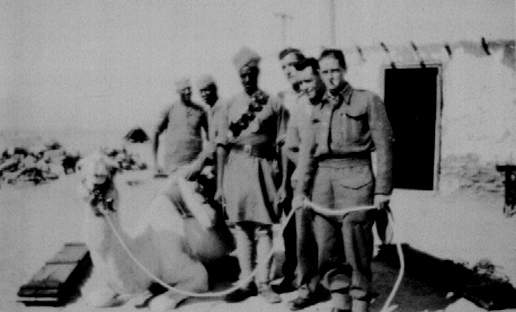
|
Sudanese Camel Corps + H Milford
C Walsh T Shaw 1940 |

|
Ibrahim
Ahmed 1940 |
Egyptian Army
Anti-Mine Defence
"The Germans never attacked Port
Suez or any of our large depots. The only action they did take was to lay
magnetic mines
by aircraft. They only did this at night. Their purpose was to sink the Allied
supply ships and make the canal impossible to use. Compared to our home river,
The Bann, there was no tide in the Canal. If you threw a stick into the water,
it would drift up the canal for a short time and then return again. There was
no rise of fall in the water at any time we were there". Robin Martin
(2004)
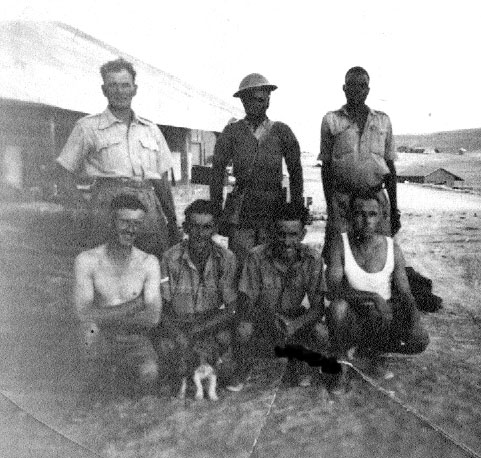
"The Egyptian
army had a very important role to play in the defence of the canal. Pairs of
Egyptian soldiers were posted along the full length of the canal, every half
mile. They were tasked to record the splash of any magnetic mines being laid in the
canal by German aircraft. On the ground or on a table, they were supplied with
a plywood board. This was overlaid with drawing paper. In the centre a stick
was nailed at their end.
Once they located
the splash of a mine entering the canal, they plotted the direction of the
splash, drew a line on the paper and recorded the time. When all the papers
were collated, it would indicate where the mine had entered the water. When a
mine did enter the water, it usually sank to the bottom of the canal and stuck
in the mud.
The Royal Navy
mine sweepers would then locate and explode these mines the next day. On one
occasion we watched the minesweepers in action. After three passes over the
area indicated by the Egyptian soldiers, the mine exploded. First the water
rose high in the air. This was followed by the mud and dirt. The water boiled
and finally, the fish started to float to the surface." Robin Martin
(2004)
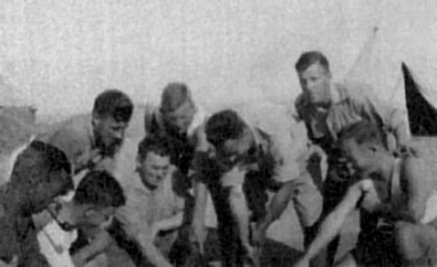
|
X Troop annoying a scorpion at the Suez Oil Refinery
R Martin J Brogan J Henry R
McClelland W Patterson C Walsh T Barr R McDonald |

Sergeant Norman Irwin's Story
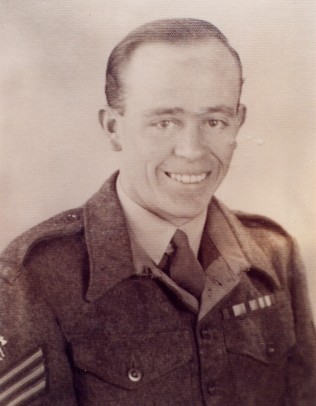
When the Battery
was at Bur Tewfiq we were ferried ashore by lighter
and went to
Brian Clarke's Troop from mid Ulster were responsible for the guns at the south entrance to the canal. At the south entrance to the canal there was an island with a gun on it. There were also a couple of guns on the east bank of the canal at Port Tewfiq and a couple on the west bank at Suez. At the north entrance to the canal, the Battery manned the guns at Port Said and Port Fuad. The guns had been in position for quite a while. They were basically denuded and in a state of dangerous disrepair. For example, the wheels had been stripped off and it was doubtful if the guns would be safe to use. The basic maintenance tool kit was not available. This made it impossible to remove the automatic loader for daily cleaning. The sand would interfere with the working mechanism therefore daily cleaning was always a minimum requirement.
I made a tool kit that was used to remove the automatic loader in order to clean my own gun. As soon as Brian Clarke discovered that I could strip the automatic loader and clean the gun, he changed my job. He organised it so that I was detached from my gun. I was accommodated in a Port Siad hotel. He also gave me a taxi and an Armenian driver so that I would have no problems in maintaining all the guns in his Troop.
No 7 (REME)
Workshop Tel el Kabir
After that episode I left the
I was put in
charge of No 7 Workshop. There we worked round the clock in twelve hour shifts.
We did a six hour shift on Sundays in order to change from day to night shift. Our main task in the workshop was to ensure that all
the equipment coming into the Desert campaign was ready for use. This included
Jeeps, trucks and tanks. On many occasions this equipment had been sabotaged
before it reached us. It was impossible to determine where or at what stage of
the journey to
1.
At the factory of manufacture
2.
En route to the docks
3.
While on board the ship
4.
At the Egyptian docks
On one occasion,
the spark plugs had been removed from a truck, the engine was filled with peat
and then the spark plugs were replaced.
Workshop
Security The workforce was only searched on leaving the Camp,
never on arrival. The Camp did not have a perimeter fence, just a token strand
of wire to denote the Camp boundary. There were very few main roads into the
Camp area. When the civilians finished work, they simply walked off into the
desert from all points of the compass. At the end of the day, civilians were
searched within each workshop before they made their way home. Part of my duty
was to supervise the searching of the civilian workforce. The searches were
carried out by a Sikh Regiment and supervised by a British Army Senior NCO.
On one occasion an Arab store man was searched. He was dressed in Western clothes, including a Trilby hat. Nothing was found, but he was called back and the Sikh soldier lifted his Trilby. Balanced on the store man's head was a bar of army issue soap. On some occasions an army unit would put on a show of strength by encircling the camp area at closing time. All civilians were then searched for a second time before they were permitted to leave the camp area. Despite the initial searches within each workshop, these surprise searches left the open areas full of quickly discarded stolen equipment.
Italy During a late shift, the Orderly Sergeant came looking for a volunteer to go to a Regiment stationed in the Western Desert. There were two takers, Harry 'Smudge' Smith and myself. We tossed a coin and I won.
At 2.30 in the morning I was in the Medical Officers hut for the required medical before transferring. The Orderly Sergeant shook the MO. He rolled over, opened one eye and looked at the Orderly Sergeant who told him why I was there. The MO put his hand out and I gave him my Pay Book. He then put his other hand out and the Orderly Sergeant put a pen in it. The MO rolled over another bit, opened the other eye and looked at me. He asked me if I wanted to go to the other unit. I replied that I did. He signed the Pay Book, handed back the Pay Book and pen, rolled over and went back to sleep.
I was transferred to the Army Ordnance Corps and then attached to the 201st Guards Brigade until the end of the war. My task was to organise the recovery of damaged vehicles and equipment from the battle fields as the Brigade fought their way from Salerno to Monte Cassino. Salerno was difficult, the Axis defence was so strong we had to make the landing 2 miles further down the coast than planned. I was second off the landing craft. This was because I was in command of a Recovery Wagon. I had to position myself so that I could recover any damaged vehicles and allow the landing to go smoothly. We lost more men at Salerno than we did on D-Day.
I was pulled out of the line at Monte Cassino and sent down to Sorrento. There, we gave all our equipment to the Canadian Army, boarded the Capetown Castle and made our way home.
I did not realise that our 9th HAA Regiment was at Salerno until 50 years later when I met Walter Richardson from Tobermore. I was telling him how I had been deafened by heavy gun fire going over my head at Salerno. He informed me that his Battery had gone home and he had been posted to the 9th Londonderry Regiment. The 9th had been sent to Italy and provided covering fire at Salerno." (Norman Irwin 2004)
The First Battery Death
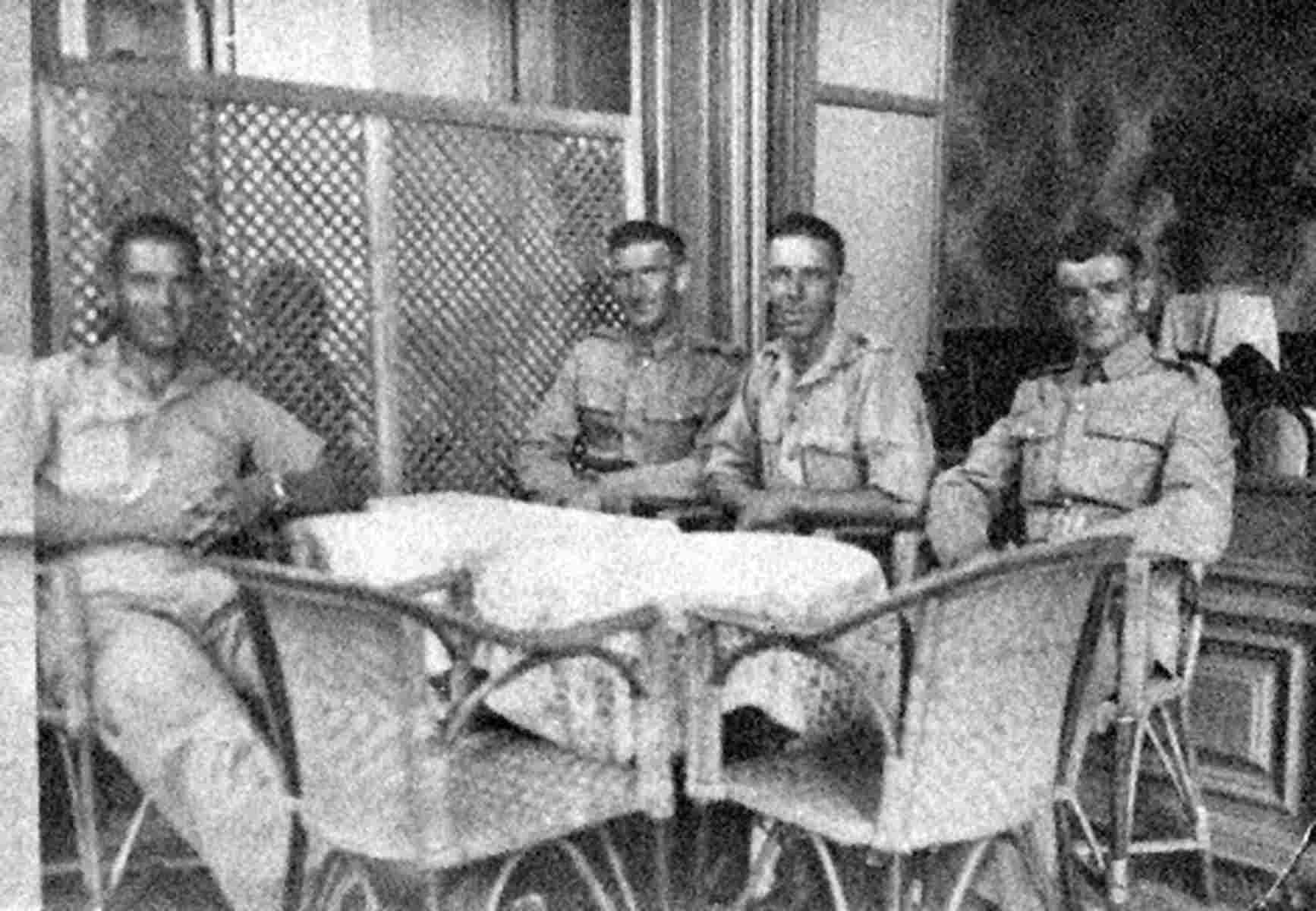
|
**** Dodger McKeown
***** Norman Walker |
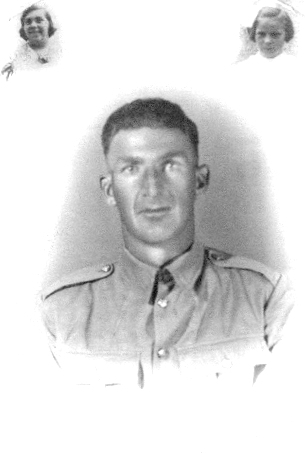
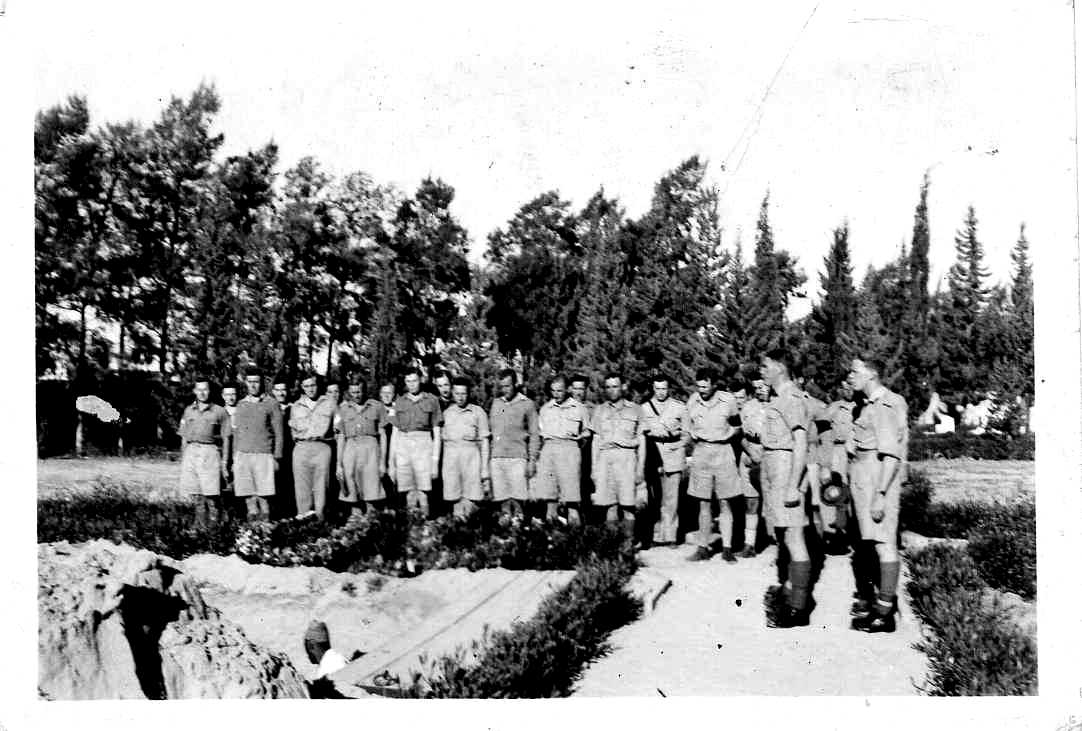
|
The Burial of Gunner Alfred McKeown In March 1941, the |